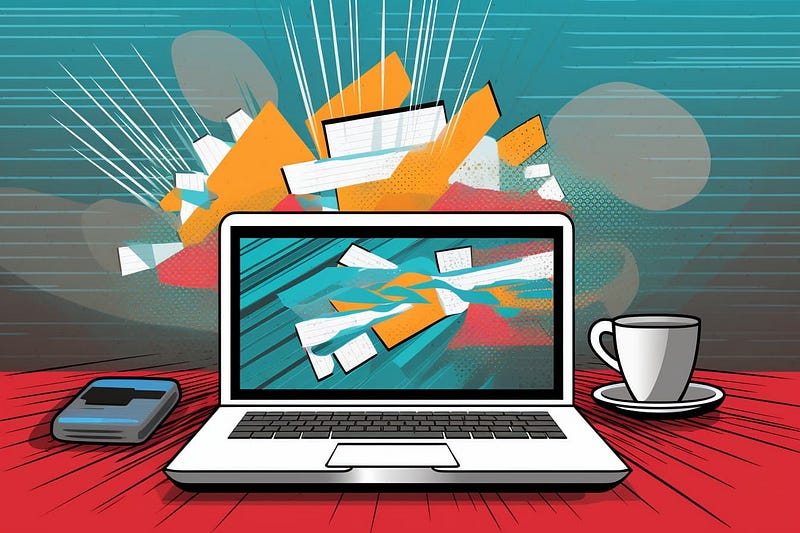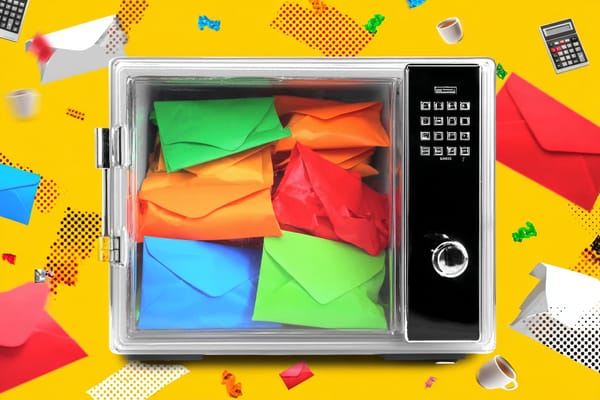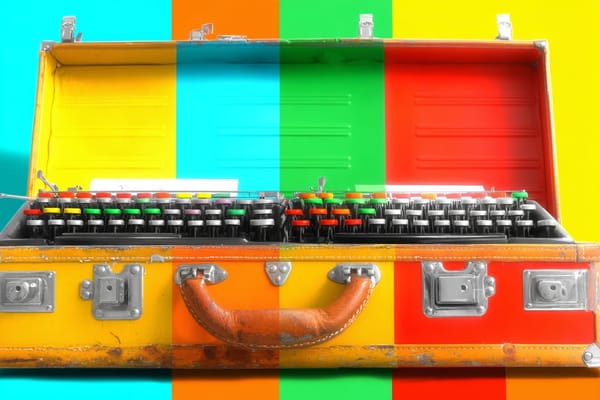Content Distribution is Your Competitive Advantage
Create a system to get your content into the world.

You can write an amazing piece of content. Filled with insights, industry expertise, and original research. Any reader who trips across it will learn something.
The problem? Readers won’t just trip across your content. Your hard work will go to waste without a plan to get that content in front of your target audience.
Many solopreneurs view content as a competitive advantage. And it can be — but only if you have a distribution plan. It can’t be an afterthought: it should be a systemized process in your overall marketing plan.
The right mix of distribution will vary depending on your audience, your goals, and your bandwidth.
Effective content targeting
To get the most out of your content, you need to think about two things: who you want to reach and where they spend their time.
Content distribution should not be a “spray and pray” strategy where you blast all platforms with a link to your content. That’s an easy way to ensure that your content is ignored.
The wrong way: “Check out my latest article!”
The right way: A post or thread with a specific insight taken from the content. End the post with “Want to learn more? Link to article in the comments.”
Your target audience could be a specific persona, like a “marketing manager at a small business.” But it could also be more general, like “people interested in data visualization.”
Once you know who you want to reach, do the research. Does your audience:
- Read certain publications?
- Follow specific influencers?
- Participate in online communities?
Many solopreneurs make the mistake of thinking they need to be on every platform. In fact, the opposite is true: trying to be everywhere often results in being nowhere. Take note of what successful creators and freelancers are doing on those platforms and tweak their approach to match your own voice and tone.
It’s better to focus on a few platforms that make sense for your audience and do them well. Once you’ve built up a presence on those platforms, you can always expand to new ones.

Content distribution workflow
People are often so eager to publish that they don’t set aside time to repurpose the content. They’ll draft an initial social post or include the content in an email and that’s the end.
Instead, each type of content should follow a specific sequence to prep for repurposing, both now and in the future. For example, your content distribution checklist for a blog post can look like this:
- Share immediately on social platforms
- Schedule to be re-shared in the future
- Repurpose into 2–3 LinkedIn posts
- Turn into one Twitter thread
- Create two visuals in Canva using quotes or stats
- Included as a link in your next newsletter
- Add as a link to 2–3 older, high-performing posts
- Find 2–3 instances where you can thoughtfully comment on an influencer’s content and share the link to the post
Whenever you’re ready to publish something new, start with a distribution checklist specific to the type of content. Not only will it help you get more eyes on each piece, but it also makes distribution easier: you’re not “thinking” of a new plan on the fly; you’re operating from a specific workflow.
Timing and execution
Your content distribution should be a well-oiled machine. Your checklist will only work if you build a content calendar and strategically schedule your future posts (amid net new content, event announcements, etc.).
Set aside a block of time each week to work on this. Build dates into your checklist based on the type of content and the platform.
If you want to share 3 LinkedIn posts over the next two months, add distribution dates of 2 weeks after publication, 4 weeks after publication, and 7 weeks after publication.
You can plot out the dates for each platform so that your content calendar fills in somewhat automatically based on your distribution plan. That way, you never think too hard about what you want to share and when.
You can take this a step further and reduce some of the manual work. I use Trello to plan my content calendar, but any to-do list app would work. When I publish new content, Zapier [affiliate link] does the following:
- Creates reminders for me in Trello (cards)
- Adds dates to those cards based on a pre-determined frequency
- Adds labels to the cards based on category and platform (social, newsletter, etc.)
Each published issue of my Substack gets two LinkedIn posts, one week later and two weeks later. These reminders are added to Trello for me. When scheduling content, I look at everything “due” in Trello from my past published work. I’m executing a content distribution plan created by automation: I only needed to set it up once.
Asset management
When you start distributing and sharing content on different platforms, you need a way to manage your assets. This can include things like:
- Title
- Date published
- Link to live URL
- Platform (blog, Medium, social, etc.)
- Visuals like a hero image or infographic
- Categories or tags
Let’s say you want to include a link to the content in a future newsletter issue. Which issue? Or you want to go back and update old articles with a link to this new content. Which articles cover the same topics?
The best way to manage this is with a content library. This could be as simple as a GSheet listing all your assets. Or an app like Airtable will give you more robust options for creating a content library.

If you take the time to add your published assets to your content library, it will become much easier to distribute in the future. You can track the linking, related content, and even content performance over time.
Most people don’t take the time to track their work, and it’s a missed opportunity. If you only look at distribution “for the future” (like future repurposing into social posts), you’re not taking advantage of older content that could link to your newer work. Or an issue of your newsletter that you publish 8 months from now, but you forget to include the link.
Take a few minutes with each post to manage your published assets and you’ll save time in the future and make distribution easier.
The reward for distribution strategy is an audience
As a busy solopreneur, it’s easy to get wrapped up in a project and forget about distribution. But if you want to build a sustainable business, you need a way to get your content in front of the right people.
Creating a content distribution strategy helps you systematize your approach and make it repeatable. By thinking through all the different ways you can share your content, you can put together a plan that gets more eyes on your published work.
Check out my free eBook: 17 Smart Tools Solopreneurs Need to Start, Grow, and Scale.






